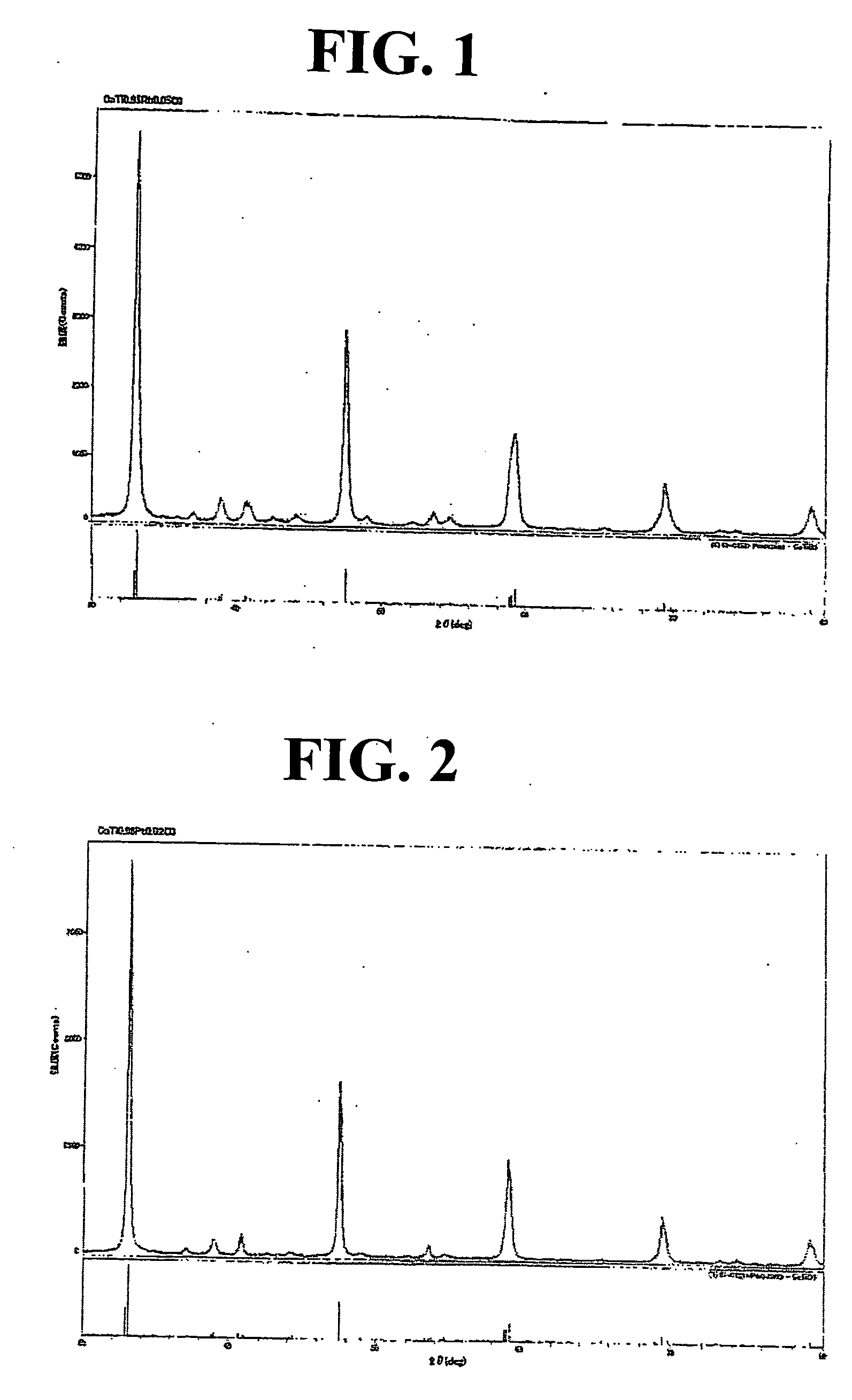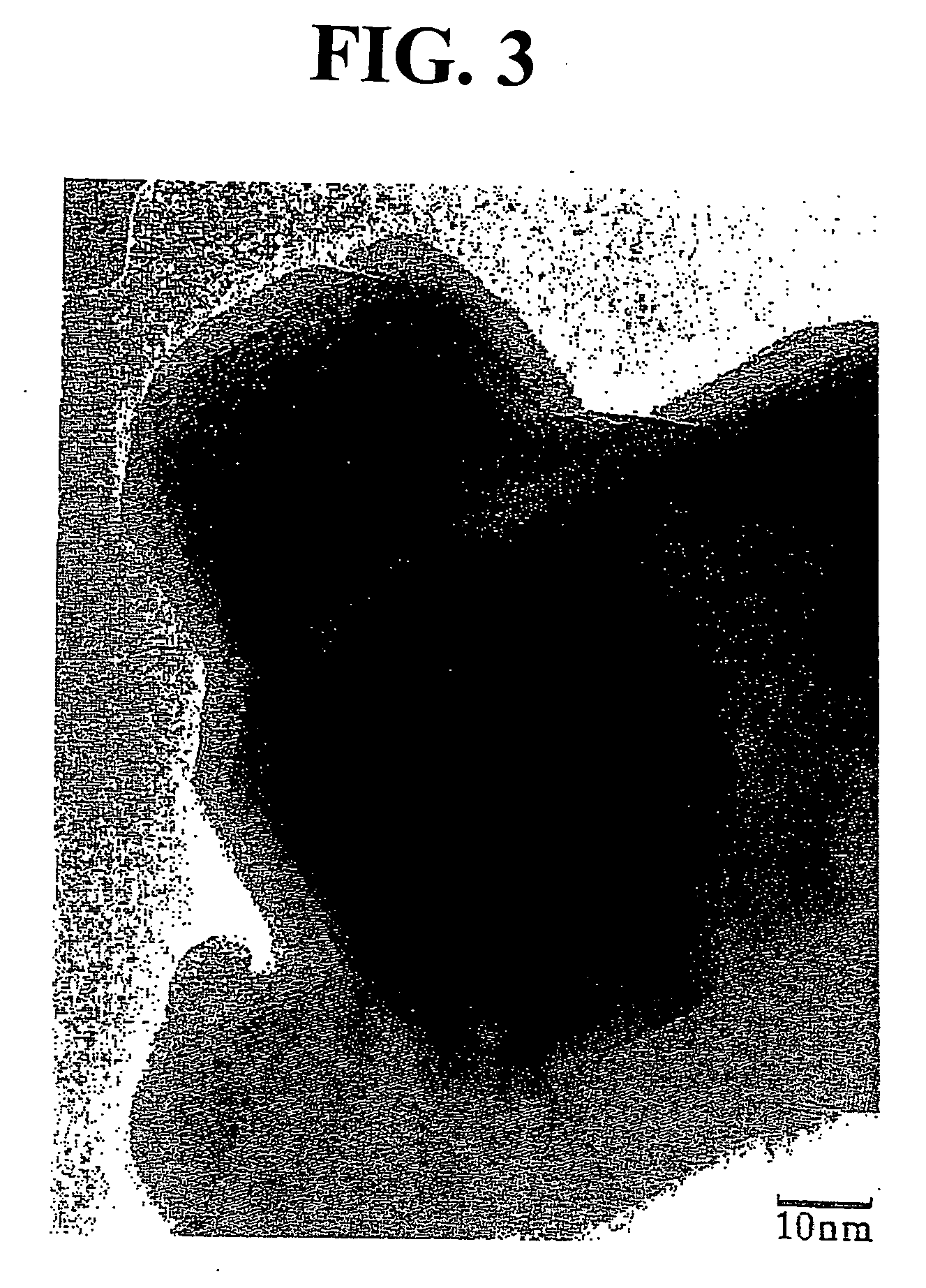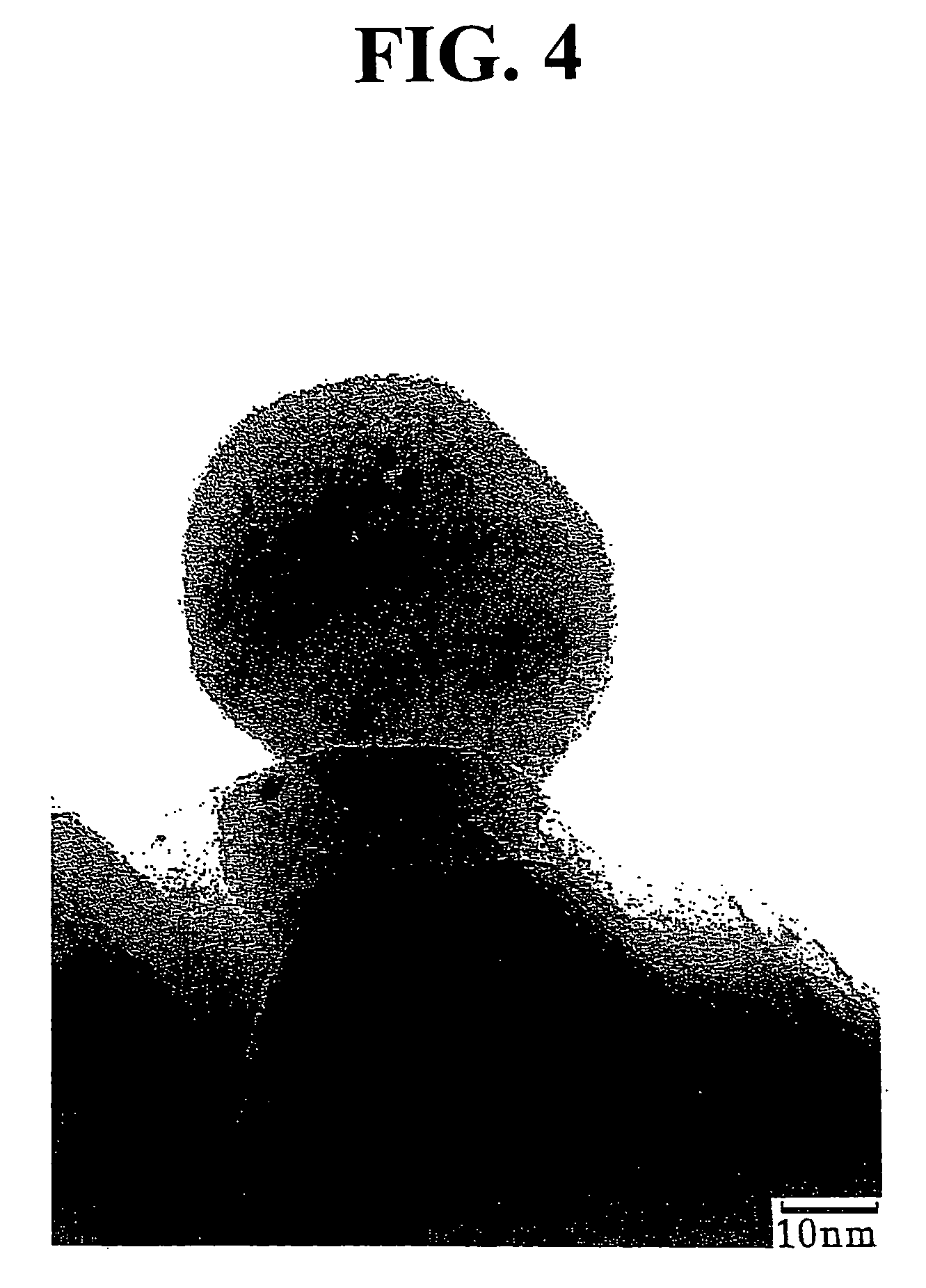Catalyst Composition
a catalyst and composition technology, applied in physical/chemical process catalysts, metal/metal-oxide/metal-hydroxide catalysts, separation processes, etc., can solve the problems of difficult to prevent grain growth and insufficient thermostability of pt, and achieve satisfactory catalytic performance, satisfactory exhaust gas purification performance, and prevent the effect of activity deterioration
- Summary
- Abstract
- Description
- Claims
- Application Information
AI Technical Summary
Benefits of technology
Problems solved by technology
Method used
Image
Examples
example 1
[0127] (Production of CaTi0.95Rh0.05O3)
Calcium isopropoxide15.8 g (0.100 mol)Titanium isopropoxide27.0 g (0.095 mol)
[0128] A mixed alkoxide solution was prepared by charging the above components in a 500 mL round-bottomed flask, adding 200 mL of toluene and dissolving them with stirring. The mixed alkoxide solution was hydrolyzed by adding dropwise 200 mL of deionized water to obtain a white viscous precipitate. The toluene was distilled off from the mixed alkoxide solution to obtain an aqueous slurry, and the aqueous slurry was mixed with 10.29 g (Rh content: 5.00% by weight, 0.005 mol) of an aqueous rhodium nitrate solution and stirred at room temperature for 1 hour.
[0129] Next, the resulting mixture was evaporated to dryness by distilling off water under reduced pressure to obtain a precursor. The precursor was subjected to a heat treatment (baking) in an electric furnace at 950° C. in the air for 2 hours to obtain 13.5 g of a brown powder of an Rh-containing perovskite-type c...
example 2
[0131] (Production of CaTi0.98Rh0.02O3)
Calcium isopropoxide15.8 g (0.100 mol)Titanium isopropoxide27.9 g (0.098 mol)
[0132] After the above components were charged in a 500 mL round-bottomed flask and treated by the same procedure of Example 1, the obtained aqueous slurry was mixed with 4.12 g (Rh content: 5.00% by weight, 0.002 mol) of an aqueous rhodium nitrate solution and stirred at room temperature for 1 hour.
[0133] Next, the resulting mixture was evaporated to dryness by distilling off water under reduced pressure to obtain a precursor. The precursor was subjected to a heat treatment (baking) in an electric furnace at 800° C. in the air for 1 hour to obtain 13.2 g of a brown powder of an Rh-containing perovskite-type composite oxide having the composition of CaTi0.98Rh0.02O3 (Rh content: 1.50% by weight).
[0134] The X-ray diffraction analysis of the powder revealed that it was identified as a single crystal phase comprising an Rh-containing perovskite-type composite oxide ha...
example 3
[0135] (Production of CaTi0.98Pt0.02O3)
Calcium isopropoxide15.8 g (0.100 mol)Titanium isopropoxide27.9 g (0.098 mol)
[0136] After the above components were charged in a 500 mL round-bottomed flask and treated by the same procedure of Example 1, the obtained aqueous slurry was mixed with 8.48 g (Pt content: 4.60% by weight, 0.002 mol) of an aqueous dinitrodiammine platinum nitrate solution and stirred at room temperature for 1 hour.
[0137] Next, the resulting mixture was evaporated to dryness by distilling off water under reduced pressure to obtain a precursor. The precursor was subjected to a heat treatment (baking) in an electric furnace at 700° C. in the air for 1 hour to obtain 13.6 g of a brown powder of a Pt-containing perovskite-type composite oxide having the composition of CaTi0.98Rh0.02O3 (Pt content: 2.81% by weight).
[0138] The X-ray diffraction analysis of the powder revealed that it was identified as a single crystal phase comprising a Pt-containing perovskite-type com...
PUM
| Property | Measurement | Unit |
|---|---|---|
| atomic number | aaaaa | aaaaa |
| atomic number | aaaaa | aaaaa |
| atomic number | aaaaa | aaaaa |
Abstract
Description
Claims
Application Information
 Login to View More
Login to View More - R&D
- Intellectual Property
- Life Sciences
- Materials
- Tech Scout
- Unparalleled Data Quality
- Higher Quality Content
- 60% Fewer Hallucinations
Browse by: Latest US Patents, China's latest patents, Technical Efficacy Thesaurus, Application Domain, Technology Topic, Popular Technical Reports.
© 2025 PatSnap. All rights reserved.Legal|Privacy policy|Modern Slavery Act Transparency Statement|Sitemap|About US| Contact US: help@patsnap.com



